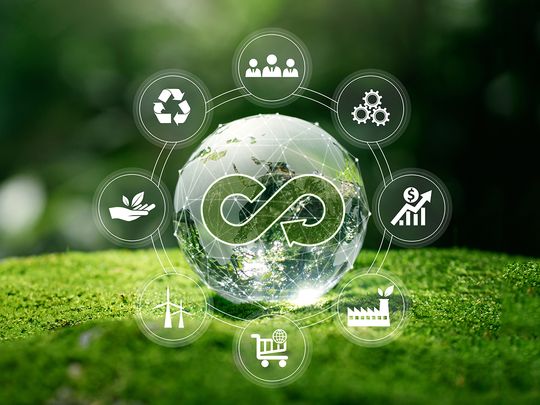
Software-driven innovation is critical to driving the transformation needed to create a climate-secure future.
Whilst 2023 saw a focus on encouraging behaviour changes that inspire collective progress, 2024 is calling for a collective effort to adopt sustainable practices through a range of community-driven initiatives and activities themed around sustainability.
Here are five predictions on how progress on this front will accelerate sustainability across industries in the next five years.
Organisations will adopt circular economy business models
To build a competitive global circular economy that produces no waste, companies must adapt their business models to maximise resource efficiency, develop recyclable products and repurpose waste as new offerings. A crucial part of this is creating digital business ecosystems to enable effective decision making and action.
One of the biggest challenges of moving to a circular economy is collecting and sharing data about a product throughout its entire lifecycle. Digital product passports (DPPs) offer that capability and promise to act as a transparent record of a product’s sustainability, environmental and recyclability attributes.
Enabling traceability through software, DPPs can help businesses improve product management across the supply chain, which can also drive cost savings.
AI will help manage natural resources
According to a Sustainable Futures report, AI has become important for tackling most environmental sustainability issues including biodiversity, energy, transportation and the management of agroecosystems.
In the agriculture sector, AI can produce insight and increase automation to improve environmental stewardship and detect diseases and potential infestations before crops or livestock are threatened.
Technology not only impacts individual farms’ output, but data generates valuable insights that can positively influence policy decisions at the local or national level. AI is also at the centre of efforts to reduce waste and improve cost-effectiveness and sustainability of water operations in the agriculture industry.
AI will increase the viability of renewable energy
McKinsey estimates that by 2026, global renewable-electricity capacity will rise more than 80 per cent from 2020 levels. For example, the annual Invesco Global Sovereign Asset Management Study found that 71 per cent of Middle Eastern SWFs are prioritising investments in the infrastructure sector, particularly renewable energy and transmission segments.
Currently, millions of individual devices uploading and downloading electricity rewrites the fundamentals of how electric grids perform. Automation and data analytics can help manage decentralised energy sources, direct excess electricity and flag potential grid weak points before they become significant issues, and help utilities redirect power to where it’s needed in real-time.
To enable this, legacy utility giants will need to reassess their operating models and invest in modern cloud-based IT infrastructures which enable data to be managed effectively and analysed across the whole organisation.
Shift to software-defined EVs
As countries work to achieve net-zero emissions by 2050, the decarbonisation of transport has taken on greater importance. During COP28, Dubai's Roads and Transport Authority (RTA) introduced the 'Net-Zero Emissions Public Transportation in Dubai 2050' strategy, becoming the first Middle Eastern agency to develop a long-term plan for achieving net-zero emissions in public transport by 2050.
As it stands, 18 of the world’s largest automakers have switched or pledged to switch, either completely or significantly, to EV manufacturing. EVs will be software-defined vehicles (SDVs), with automated capabilities to manage the car more efficiently with particular attention to environmental sensitivities.
SDVs feature smart routing and energy optimisation that can mitigate issues related to charging capacity and range.
Finance systems will be re-engineered to consume less energy
Transitioning to more environmentally sustainable operations is a top priority for banks and financial services organisations. More sustainable software, more efficient algorithms and better data processing are key to these efforts. The global green finance market has thus grown from $5.2 billion in 2012 to more than $540 billion in 2021.
In the Middle East, the UAE Banks Federation announced a major initiative by the banking sector to collectively mobilise over Dh1 trillion in sustainable finance by 2030. In addition to growing environmentally conscious portfolios, the financial services sector is significantly reducing its energy consumption by enabling efficiencies in data centres.
Today, organisations must build sustainability into their system architectures and templates; make sustainability a non-functional requirement in bids; and require sustainability targets in service level agreements.
As architects, engineers, project managers and software delivery staff herald this change, teams will seamlessly transition to using code to support sustainability while maintaining and even improving competitiveness and profitability. We can all look forward to the day when sustainability is the new standard, and software will be at the heart of helping us create a climate-secure competitive future.











